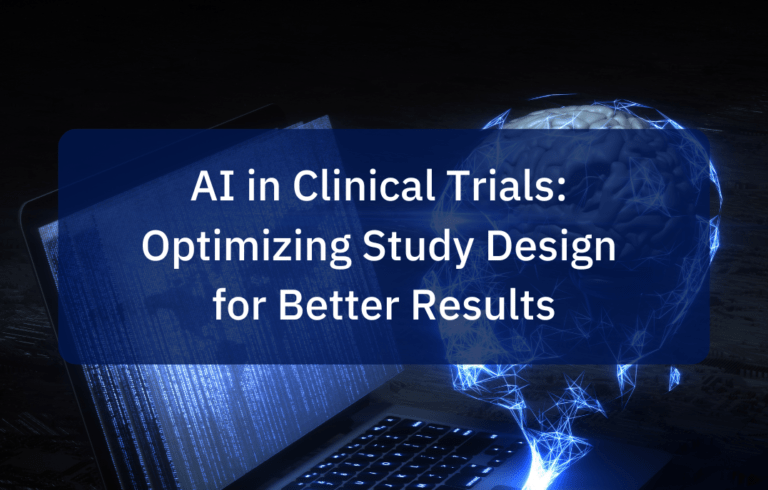
OUR SERVICE
Software As A Medical Device (SaMD) has transformed the way healthcare is delivered. With the advancements in technology, SaMD has become more prevalent. This makes the role of SaMD regulations and development even more critical to ensuring the safety and efficacy of these healthcare solutions
Introduction to SaMD
Software As A Medical Device or SaMD, are products that undergo rigorous scrutiny under FDA (Food and Drug Administration) and other international SaMD regulations. Understanding and navigating these SaMD regulations and development protocols is critical. SaMD is intended for one or more medical purposes, such as diagnosis, treatment, or monitoring of a disease or condition. By ensuring compliance with SaMD regulations, medical device software unlocks enormous potential and attracts a growing number of manufacturers. However, grasping the scope of this market and recognizing the value of investment in this technology can be challenging.
Definitions by Regulatory Bodies
In the US, the FDA has defined Software as a medical device (SaMD) as a computer program, routine, or self-contained data intended for an automated information system to carry out a specific function. In Europe, the European Medicines Agency (EMA) has defined “Software as a medical device” (SaMD) as follows:
- Software that is designed to be operated or used by medical personnel or patients;
- Software that is designed to automate one or more steps in the clinical process;
- Software that can be used for clinical decision-making;
- Software that is integrated with other equipment used to monitor patient care, such as computerized tomography (CT), magnetic resonance imaging (MRI), nuclear medicine imaging, electrocardiography, ultrasound, and X-ray machines
SaMD’s Growing Popularity in the Medical Community
Although the concept of SaMD (software as a medical device) has been around for some time, it has only recently begun to gain traction in the medical community. This is because there is a wide variety of software available for use in the medical field nowadays. Many non-specialists and industry insiders bandy about the term SaMD, but many people still need to take the time to learn what it means and why it is so important.
This article will provide a high-level overview of SaMD, explain how the software meets the requirements to be classified as a medical device, and address some frequently asked questions.
What is SaMD in terms of developing medical device software?
Developing SaMD requires a different approach than developing traditional software. It requires a thorough understanding of the regulatory requirements and the ability to design, test, and validate the software according to these standards. This includes conducting clinical evaluations and usability studies and maintaining detailed documentation throughout the development process. In addition, SaMD developers need to have adequate knowledge about the medical field for which the software is being developed, to ensure that the software is providing accurate and reliable results.
Overall, developing SaMD is a complex and highly regulated process, but it has the potential to greatly improve patient care and outcomes in the medical field.
Advantages of Medical Device Software Developed in Accordance with SaMD Regulations and Guidelines
Among the benefits provided by software for medical devices that follows SaMD standards and regulations are the following:
- Safety and effectiveness: The software is developed keeping in mind the SaMD regulations and development practices, ensuring that it is safe and effective for its intended use. This helps protect patients from harm and improve their outcomes.
- Compliance with regulations: Developers have created the software in line with regulatory requirements set by government agencies such as the FDA and CE, helping to ensure its approval for use in medical settings.
- Clinical validation: Clinical validation, a cornerstone of SaMD regulations and development, ensures that the software undergoes clinical evaluations and usability studies. This builds confidence in its accuracy and reliability.
- Transparency and traceability: Detailed documentation is maintained throughout the development process, which can provide transparency and traceability of the software’s design, testing, and validation, which is required to assure regulatory compliance.
- Robustness and scalability: Developers design SaMD software to be robust and scalable, ensuring it performs well under a wide range of conditions and accommodates a large number of users.
- Security and privacy: SaMD software is designed to protect patient data and ensure compliance with data security and privacy regulations, which can help to protect patients’ personal information and sensitive medical data.
- Continuous improvement: SaMD software is designed to be continuously improved and updated, which can help to ensure that it remains safe, effective and up-to-date with the latest medical advancements.
In summary, adhering to SaMD regulations and development guidelines ensures that medical device software is safe, effective, compliant, and continuously evolving to meet the healthcare industry’s needs and protect patient welfare. This results in a more reliable and valuable healthcare solution.
Understanding the Regulatory Requirements in SaMD Regulations and Development
The International Medical Device Regulators Forum (IMDRF) is a voluntary group of global medical device regulators. They aim for medical device regulation harmonization. IMDRF develops international documents on topics affecting medical devices. In 2013, IMDRF formed the Software as a Medical Device Working Group (WG) to develop guidance supporting innovation and timely access to safe and effective Software as a Medical Device globally. Chaired by the FDA, the Software as a Medical Device WG agreed upon the key definitions for Software as a Medical Device, a framework for risk categorization for Software as a Medical Device, the Quality Management System for Software as a Medical Device, and the clinical evaluation of Software as a Medical Device.
Examples of Medical Device Software Following SaMD Regulations and Development Best Practices
- Diagnostic software: Software that is used to interpret medical images, such as X-rays, CT scans, and MRI scans, and provide diagnostic information to healthcare professionals.
- Treatment planning software: Software that is used to plan and simulate medical procedures, such as radiation therapy and surgery.
- Patient management software: Software that is used to manage patient data, such as electronic health records (EHRs) and personal health records (PHRs).
- Telemedicine software: Software that is used to conduct virtual medical consultations and remotely monitor patients’ health.
- Medical imaging software: Software that is used to enhance, view, and analyze medical images, such as DICOM viewer, 3D reconstruction, and CAD software.
- Medical monitoring software: Software that is used to monitor vital signs, such as heart rate, blood pressure, and oxygen levels, and provide alerts if there are any changes in the patient’s condition.
- Clinical decision support software: Software that helps healthcare professionals make more accurate diagnosis and treatment decisions by providing real-time data analysis and personalized recommendations.
- Government agencies such as the FDA in the United States and the CE in Europe regulate all these software examples, and developers have followed SaMD regulations and development to ensure they are safe and effective for their intended use.
What are the critical steps in developing medical device software?
- Define the problem and the solution. This includes understanding what your end users want, how they use it, and what they need to achieve. For example, if a doctor needs to assess the effectiveness of a drug, they would not only look at information such as dosage and side effects but also look at data such as when patients took their medication and how much time it took for them to feel better.
- The next step is to determine the impact of this problem on patients and healthcare providers. This can be done by looking at statistics from other countries or groups of patients with similar conditions. In addition, you should talk with real people who have these issues. Improving patient outcomes should be the primary focus of all efforts.
- After determining the cost to solve this problem and the money saved due to its resolution, you should create a business plan for developing and deploying SaMD solutions. It’s vital for businesses involved in SaMD projects to set clear and measurable goals for their organizations that they can track over time.
- Once your board of directors or shareholders has approved your business plan, you’ll need to start developing software solutions and finding willing partners.
When it comes to creating a SaMD, you first need to understand the Software itself. This includes understanding the software development process, the different phases of software development, the use of existing medical devices, and the use of Software in medicine.
Essential Processes for Aligning Medical Device Software Creation with SaMD Regulations
- Regulatory compliance: Conducting a thorough review of the relevant regulations, such as those set by the FDA in the United States or the CE in Europe, and ensuring that the software development process is in compliance with these regulations.
- Risk management: Identifying and assessing potential risks associated with the software and implementing measures to mitigate these risks.
- Design controls: Establishing a design control process that includes documentation of the design and development process, testing, and validation.
- Clinical evaluation and usability studies: Conduct clinical evaluations and usability studies to demonstrate the software’s safety and effectiveness and to provide evidence of its clinical validity.
- Software validation and verification: Verifying and validating the software through testing and documentation of the software’s performance.
- Quality system regulation: Implement a quality management system that complies with the relevant regulations, such as ISO 13485 for medical devices.
- Cybersecurity: Ensure that the software is secure and complies with any relevant cybersecurity regulations to protect patient data.
- Premarket clearance or approval: Submit an application for premarket clearance to agencies like the FDA in the US or CE in Europe. Show that the software is safe and effective.
- Post-market surveillance: Create a post-market surveillance plan. This should include monitoring the software’s performance after clearance.
This list is not exhaustive. The software specifics and regulations might demand more steps or attention. It’s crucial to have an expert team knowledgeable in software development and medical device regulations. This ensures compliance with SaMD guidelines. Your medical device software will need updates and fixes post-release. Make sure to include these in your plans.
Conclusion
Digital Health companies can develop Medical Device Software and Apps as per SaMD regulations by following a few key steps.
First, they must conduct a risk analysis and determine the classification of their device. This will determine the level of regulatory oversight required.
Next, they should make sure their software complies with relevant standards and guidelines, like those the FDA or EMA establish. This may include conducting clinical studies or obtaining premarket clearance or approval. Finally, they must implement robust quality management systems to ensure that the software is continually monitored and updated to meet the latest standards and guidelines.
It is also important for Digital Health companies to be aware of the compliance requirements for SaMD. This includes ensuring that their software is secure and protected against hacking or data breaches, as well as complying with data privacy laws such as HIPAA in the US.
Services Provided by Maxis Clinical Sciences
Maxis Clinical Sciences can help Digital Health companies in their journey of developing SaMD-compliant software and apps by providing a range of services, such as:
- SaMD classification and risk analysis
- Clinical evaluation and study design
- Regulatory compliance and consulting
- Quality management system implementation
- Compliance and security assessments
- Technical documentation and labeling
- Software validation and verification
Maxis Clinical Sciences has a team of experts with experience in SaMD regulations and compliance, as well as a track record of successfully navigating the regulatory landscape for Medical Device software and apps. We can provide guidance and support throughout the entire development process, from concept to launch, to help ensure that the software is compliant and meets the needs of both the company and the end users.
In conclusion, Software as a Medical Device (SaMD) is a rapidly growing field with significant potential for improving patient outcomes. Digital Health companies can develop SaMD-compliant software and apps by following the regulatory guidelines and compliance requirements set forth by the FDA and EMA. Maxis Clinical Sciences can provide valuable assistance in this process, with a range of services to help companies navigate the regulatory landscape and develop SaMD-compliant software and apps that are safe and effective for use in medical settings.
By working with a specialized partner like Maxis Clinical Sciences, companies can focus on developing innovative software solutions while also meeting regulatory requirements.
Reference


AI in Clinical Trials: Optimizing Study Design for Better Results
